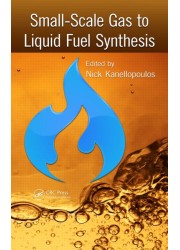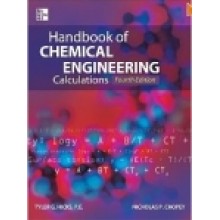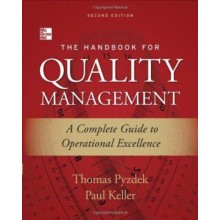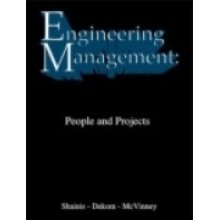Small-Scale Gas to Liquid Fuel Synthesis
Quantity:
-
Add to Compare
It is estimated that a large fraction of natural gas reserves are found in locations from where transport is not economical. If these isolated natural gas reserves could be converted to synthetic fuels, they would generate around 250 billion barrels of synthetic oil—a quantity equal to one-third of the Middle East’s proven oil reserves.
Small-Scale Gas to Liquid Fuel Synthesis explores next-generation technologies geared toward overcoming the significant cost and technical barriers prohibiting the extensive use of conventional gas to liquid (GTL) processes for the exploitation of small and/or isolated natural gas reservoirs. The book highlights key research activities in the framework of two large European projects—Innovative Catalytic Technologies & Materials for Next Gas to Liquid Processes (NEXT-GTL) and Oxidative Coupling of Methane followed by Oligomerization to Liquids (OCMOL)—examining novel technical developments that reduce the costs associated with air fractioning and syngas production.
Featuring contributions from internationally respected experts, Small-Scale Gas to Liquid Fuel Synthesis discusses innovative GTL technologies based on recent advances in catalytic membrane systems, reaction engineering, and process design. The book provides academic and industrial researchers with a concise presentation of the current state of the art of low-cost, energy-efficient GTL technologies for small-scale applications.
Preface
Editor
Contributors
Part I : Integration of Innovative Membranes and Sorbents with the GTL Process
Chapter 1 : Status of and Challenges in Converting Natural Gas
Chapter 2 : Oxygen Transporting Membranes in Syngas Production
Chapter 3 : Recent Developments in Membrane Technologies for CO2 Separation
Chapter 4 : H2 and Olefin/Paraffin Separation with Porous Materials : State of the Art and New Developments
Chapter 5 : Separation of Ethylene/Ethane Mixtures with Silver Zeolites
Chapter 6 : Selective Removal of CH4 from CH4/CO/H2 Mixtures
Part II : Integration of Innovative Catalysts with the GTL Process
Chapter 7 : Combining Catalyst Formulation and Microkinetic Methodologies in the Detailed Understanding and Optimization of Methane Oxidative Coupling
Chapter 8 : New Trends in Catalyst Design for Methane Dehydroaromatization
Chapter 9 : Structured Catalysts on Metal Supports for Light Alkane Conversion
Chapter 10 : Methane Dry Reforming on Nanocomposite Catalysts : Design, Kinetics, and Mechanism
Chapter 11 : Development of Bifunctional Ni-Based Catalysts for the Heterogeneous Oligomerization of Ethylene to Liquids
Chapter 12 : Understanding the Mechanisms of Gas-to-Liquid Processes with the Aid of Quantum Chemistry Tools : Case Studies of the Shilov Reaction and Natural Gas Aromatization
Part III : Innovative Oxidative and Nonoxidative GTL Processes
Chapter 13 : Production of High-Octane Fuel Components by Dehydroalkylation of Benzene with Mixtures of Ethane and Propane
Chapter 14 : Syngas to Liquids via Oxygenates
Chapter 15 : Solar-Aided Syngas Production via Two-Step, Redox-Pair-Based Thermochemical Cycles
Chapter 16 : Membrane-Assisted CPO : A New Sustainable Syngas Process
Chapter 17 : Methane Direct Aromatization Process from an Industrial Perspective : Technical Catalyst and Conceptual Design for Reactor and Process
Index
Write a review
Your Name:Your Review: Note: HTML is not translated!
Rating: Bad Good
Enter the code in the box below:
Copyright © 2014 Engineering Standards Bureau. All Rights Reserved.
Developed By Zoom Into Web









